body and glaze
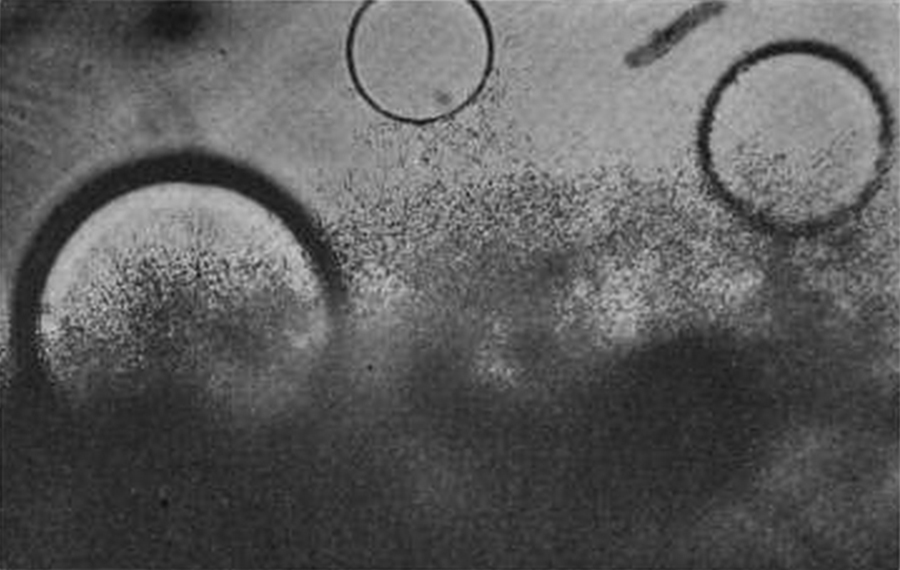
*
Fig. 16. Showing fracture piece of Royal Berlin chemical porcelain consisting of both body and glaze and demonstrating the reaction between them during the glost burn. Note the spherical blebs and the sillimanite needles extending from the body into the glaze. Because of the thickness of the fracture piece, the body appears opaque.
Magnification = 300 diam.
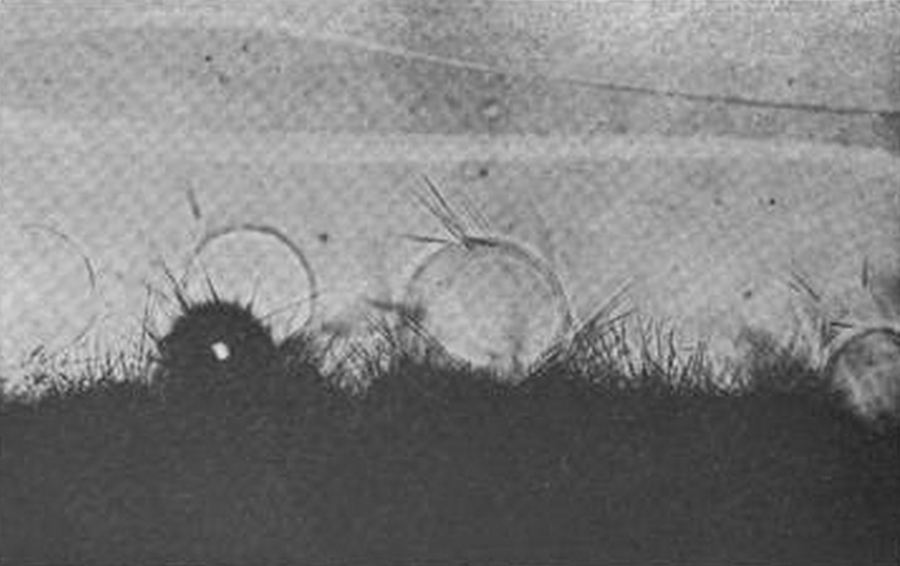
*
Fig. 17. Showing a fracture piece of Thuringien chemical porcelain consisting of both body and glaze. Note the similarity to Fig. 16, except for the larger sillimanite needles.
Magnification = 190 diam
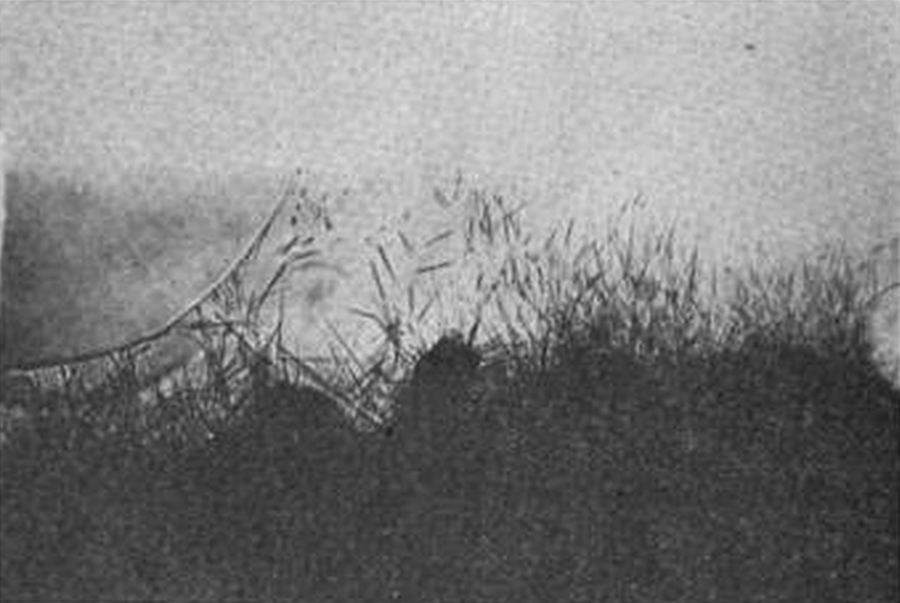
*
Fig. 18. Showing a fracture fragment of Royal Meissen chemical porcelain. Note the similarity to Fig. 17.
Magnification = 300 diam.
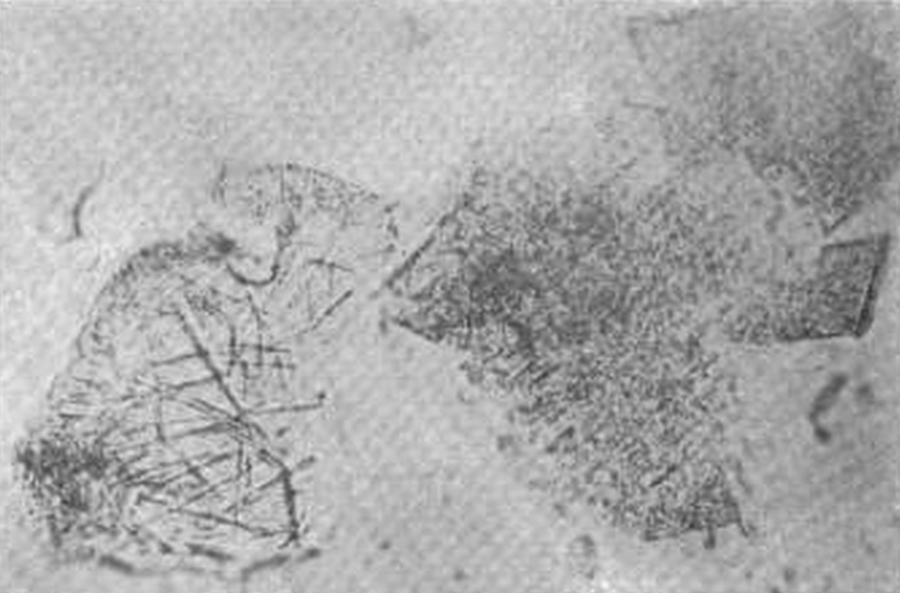
*
Fig. 19. Showing a fracture piece of Royal Meissen chemical porcelain body magnified to a higher degree than that of Fig. 18. Note the excellent sillimanite development.
Magnification = 600 diam.
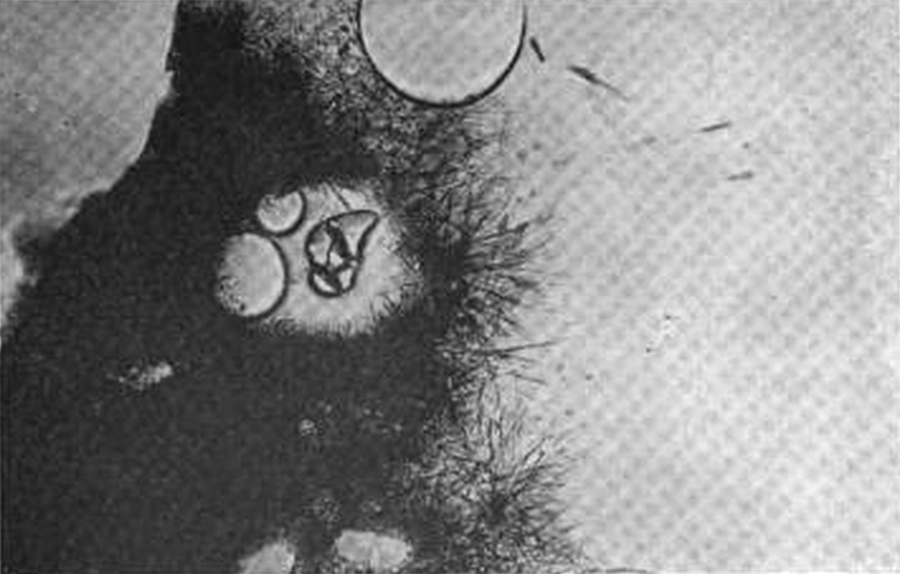
*
Fig. 20. Showing a fracture piece of Royal Meissen chemical porcelain consisting of body and glaze. This photograph is interesting in that it shows not only the sillimanite needle development between body and glaze and the blebs but also a grain of quartz exhibiting typical evidence of solution around the edges and along fracture cracks.
Magnification = 190 diam.
(images cropped to square, otherwise unadulterated)
illustrating A. A. Klein. “The Constitution and Microstructure of Porcelain.” Transactions of the American Ceramic Society 18 (1916) : 377-423
Cornell copy, digitized February 23, 2011
remembering a first visit to a kiln, 1971 or 72 (0011).
how it might have felt, to observe these, to decide to click at these moments over others.
tags:
aesthetics of technical images; blebs; body; kiln; memory; opacities; porcelain
A. A. Klein, “The Constitution and Microstructure of Porcelain” (1916)